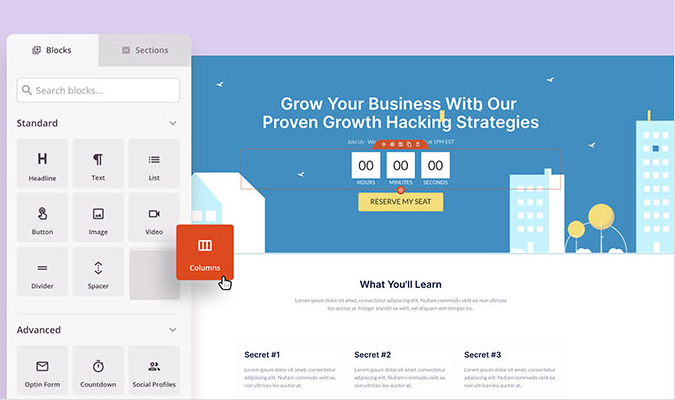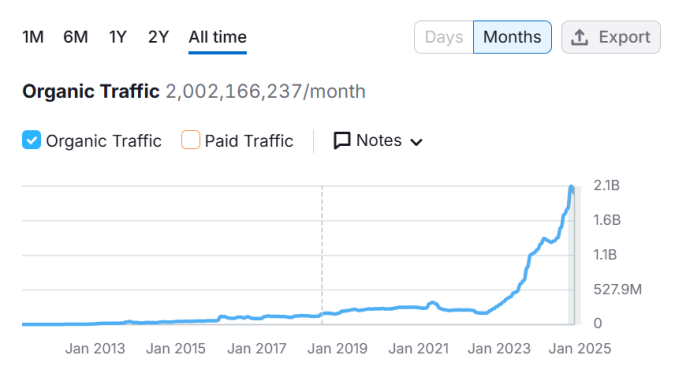Having an online presence is critical for businesses today. A big part of that is managing your reviews on sites like Google, Yelp, and Facebook.
Having good reviews on these sites helps improve your business’s credibility and search ranking.
But what happens when you get a bad review? Bad reviews can tarnish your company’s reputation and cost you, customers.
In this article, we’ll show you how to delete a Google review (or how to ask Google to remove it) as well as some tips for managing your business’s online reputation.
Why Deleting Google Reviews is Worth It
Picture this: you own a small business and you’re trying to get the word out there.
You’ve spent countless hours (and money) on marketing and SEO, and finally, people are finding your site.
But when they do, the first thing they see is a negative review from two years ago.
That’s not good for business.
Not only that, but those old reviews can actually hurt your search ranking.
Google reviews are one of the most important ways potential customers learn about your business.
When someone is considering using your services, they are likely to search on Google to see what others have said about your company. If they see a bunch of negative reviews, they may decide to take their business elsewhere.
Therefore, it is important to keep an eye on your company’s Google reviews and take action on any that are fake, violate Google’s policies, or misrepresent the experience.
Of course, it takes time and effort to monitor your Google reviews and deal with the ones that are not helpful to your business. However, it is worth it in the long run. A few negative reviews can cause potential customers to lose faith in your company.
Removing policy-violating or fake reviews and responding thoughtfully to legitimate negative reviews can help you maintain a good reputation and attract more business.
The Investment Needed to Delete a Google Review
As the saying goes, time is money. When you’re running a business, you already have a million things on your plate.
If you plan to manually parse through your Google reviews and report the ones that are not legitimate, you will need to set aside some time. The amount of time needed will depend on the number of reviews you have.
However, choosing this method means that you won’t automatically see every new review across Google, Maps, and other platforms. And since you’ll be doing the parsing manually, you won’t be able to catch every one.
That’s where online reputation management (ORM) software comes in. ORM software is designed to help businesses track reviews across platforms, respond quickly, and more easily request removal of reviews that violate policies. In doing so, it can help to improve a company’s overall public image.
There are a number of different types of ORM software available, each with its own advantages and disadvantages. Some focus on monitoring and replying to reviews, while others add social media and listing management.
Still, others offer a more comprehensive suite of tools, including review monitoring and management, social media management, and SEO optimization.
The right software for a given business will depend on its specific needs and goals. But the bottom line is that all ORM software can be invaluable for businesses that want to protect and improve their online reputation.
A few key features that ORM software offers that make handling reviews easier include:
- Keyword monitoring: Helps you track down negative reviews.
- Review management: Gives you the ability to quickly respond to reviews and track removal requests.
- Social media management: Allows you to see what people are saying about your business on social media platforms.
- SEO optimization: Ensures that potential customers see your positive reviews.
- Sentiment analysis: Using natural language processing (NLP) algorithms, sentiment analysis can help you automatically identify positive and negative reviews, negating the need to parse through them manually.
- Multiplatform support: Helps you track down and address negative reviews in multiple languages and on multiple sites.
If you want to invest in reputation management software, the cost varies wildly depending on your needs. Some platforms offer a pay-as-you-go model, while others require a monthly or annual subscription.
Some software is offered for free, but these usually have limited features. The most comprehensive and powerful ORM software can cost thousands of dollars per month.
The good news is that there are a number of options available at every price point. If you’re interested in having software manage your online presence for you, check out our picks for the best online reputation management software to find the right tool for your business.
6 Steps to Removing Google Reviews
If you want to delete Google reviews, there are a few simple steps that you have to follow. Since it isn’t you who wrote the review, you will need to report it as inappropriate. Google will then take a look at the review and decide whether or not to remove it.
Here’s how to delete Google reviews (and what to do after you do so):
Step 1: Log in to your Google Business Profile to flag the review
The first step is to log into your Google Business Profile. This is where you manage your business information in Search and Maps, and it’s also where you can report Google reviews.
How to flag your Google review on your desktop:
- Sign in to the Google account that manages your Business Profile.
- In Google Search or Google Maps, find your business and click Reviews.
- Locate the review you want to report.
- Click the three dots next to it.
- Select Report review or Flag as inappropriate.
- Choose the most accurate reason (spam, conflict of interest, offensive content, off-topic, etc.).
- Submit the report.
You can also use the “Manage reviews” or “Reported reviews” section inside your Business Profile to check the status of removal requests.
Step 2: Wait for Google to take action
After you’ve reported the review, it’s in Google’s hands. They will look at the review and decide whether or not it violates their guidelines.
Google will email you or update the status in the reviews tool to let you know if they’ve taken action on the review.
A few criteria Google looks at when deciding whether or not to delete a review:
- Whether the review is fake
- If the reviewer has a conflict of interest (e.g. they work for a competitor)
- If the review violates Google’s terms of service or contribution policies (hate, harassment, off-topic, sexually explicit, illegal, or incentivized reviews)
- If the review is abusive, harassing, profane, or otherwise inappropriate
- If the review appears to be part of a review manipulation or “review gating” scheme
If they remove the review, great! You’re done. If not, don’t worry. There are a few other things that you can do, which we’ll show you next.
Step 3: Respond to the review
If you can’t get the Google review removed, then your next best bet is to respond to it.
A public response shows that you’re taking the customer’s concerns seriously and are willing to address them head-on.
It also gives you an opportunity to set the record straight if there are any inaccuracies in the review.
When you’re crafting your response, keep it professional and polite.
For example, a restaurant owner may receive this review:
“The service was terrible and the food was cold. I’d advise you to go somewhere else.”
In response, they could say something like:
“We’re sorry to hear that you had such a terrible experience at our restaurant. We strive to provide the best possible service and food to our customers. If you’d like to discuss this further, please give us a call at [PHONE NUMBER].”
You could also reach out to the reviewer directly and see if you can make things right with them.
A private message gives you an opportunity to resolve the issue without anyone else seeing it. It also lets you get more specific about what went wrong and how you plan to fix it.
If the reviewer is happy with your response and solution, they may update or delete their review to help your business.
If you cannot get your review removed and responding isn’t feasible, your next best option is to bury the negative review with positive ones.
Step 4: Bury the bad reviews with good ones
The more positive reviews you have, the less impact a single negative review will have on your business.
When potential customers see that you’re getting mostly five-star reviews, they’ll be more likely to trust your business than if they see a bunch of one- and two-star reviews. And the more good reviews you have, the less weight your bad reviews will carry.
A few good ways to solicit customer feedback include:
- Asking customers to leave a review after they’ve made a purchase
- Including a link to your Google Business Profile in your email signature
- Handing out printed cards with your review link at the point of sale
- Adding a link to your Google Business Profile on your website
- Sending follow-up emails after a purchase and asking customers to leave a review
When asking online, it’s important to make reviewing your business easy.
Include a link to your Google Business Profile, and make sure your funnel takes them directly there.
Do not offer discounts, free products, or other incentives in exchange for Google reviews, and do not send customers through a “happy/sad” filter that only asks happy customers to review—Google considers those practices against its review policies.
Step 5: Take action to prevent future negative reviews
Taking action to prevent future negative reviews is just as important as dealing with the ones you have.
Because even if you’re able to get a few bad reviews removed, more will pop up eventually if you don’t take steps to prevent them.
Here are a few things that you can do:
- Monitor your online reputation regularly so that you can catch negative reviews early
- Encourage customers to leave reviews on sites other than Google, such as Yelp, Facebook, and TripAdvisor
- Make sure that your customer service is top-notch so that you can resolve issues before they become negative reviews.
If you’re selling an online product or service, you could create a funnel asking customers how much they enjoy using it. If they answer positively, they’re taken to a review site. If they answer negatively, they’re taken to a page where they can contact customer support or someone within the company—just make sure the funnel doesn’t block unhappy customers from leaving a public review.
You should also take a good look at your product offering and customer service. What could you do to improve them?
If you’re consistently getting negative reviews, chances are there’s something that you could be doing better.
Step 6: Manage your reputation with an ORM tool
Even if you do all of these steps correctly, you’ll never be able to find and respond to every single negative review about your business.
Especially if you do business in multiple locations or have several different kinds of customers, it’s impossible to keep track of everything yourself.
That’s where an online reputation management (ORM) tool comes in.
An ORM tool will help you:
- Monitor your online presence for new reviews and comments with sentiment analysis
- Get alerted whenever a new review is posted
- Respond to negative reviews quickly and easily
- Manage your social media
- Analyze your data to help you make decisions about how to improve your online reputation
- Help you improve your product offering by quantifying the data
For these reasons, online reputation management software could make or break your business.
Next Steps
If you’re looking to start with an online reputation management strategy, these six steps are a great place to start.
But if you want to really take your reputation management to the next level, you need an ORM tool.
An ORM tool will help you keep track of everything, find and respond to negative reviews quickly, and make decisions about how to improve your online presence.
Want to know which tool is best for your business? We’ve tried them all so you don’t have to. Here’s our list of the best online reputation management tools, based on your business’s needs.






